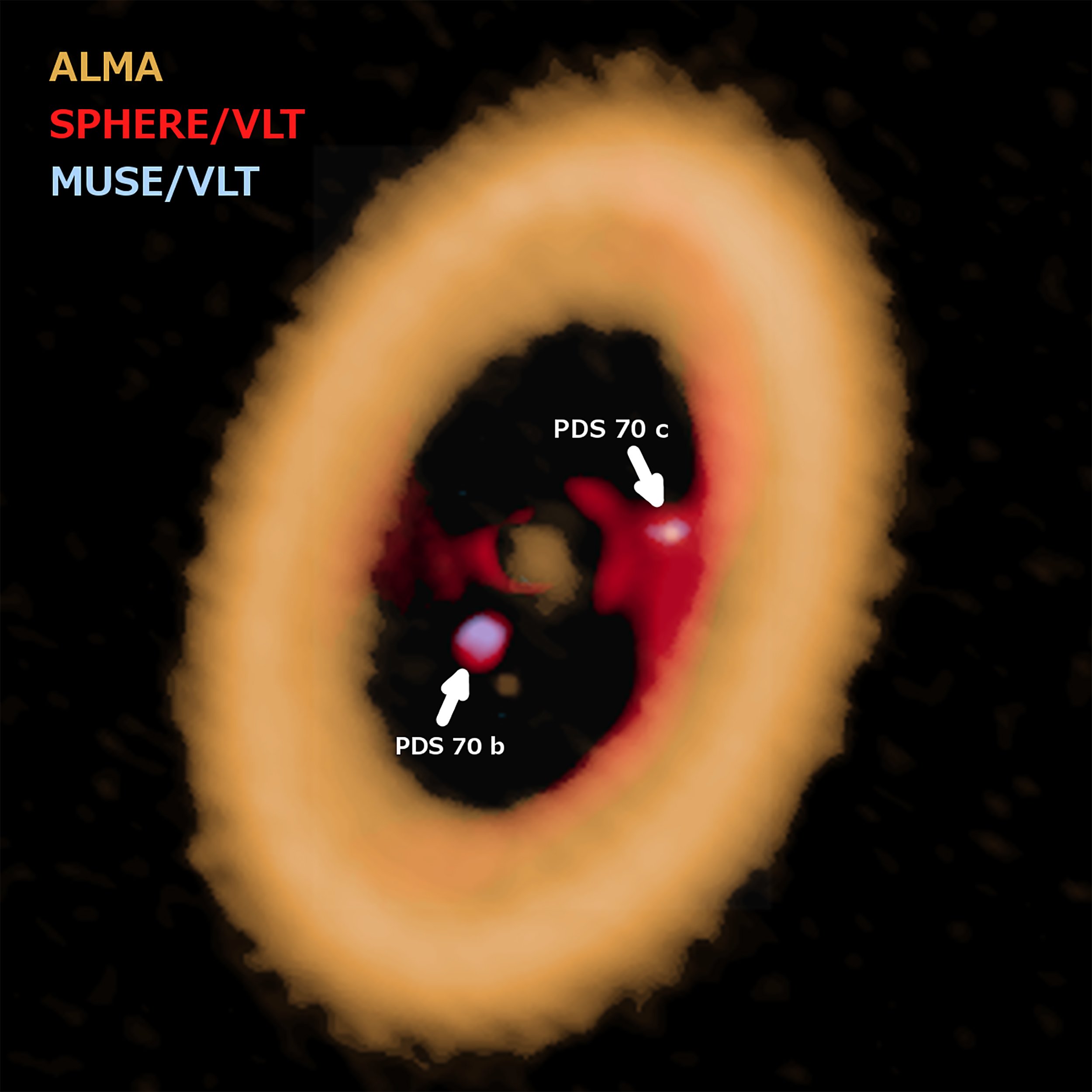A group of astronomers used the most powerful radio telescopes to detect a moon-forming disk around an exoplanet 370 light-years away from Earth. The first observations reveal a circumplanetary disk of gas and dust which is similar to the disk believed to have birthed Jupiter’s moons.
The findings about the young planet hosting the moon-forming disk were reported in The Astrophysical Journal Letters and describe planet PDS 70 b as a gas giant bigger than Jupiter that is still in the process of formation. It orbits the dwarf star PDS 70 370 light-years away from us.
“Planets form from disks of gas and dust around newly forming stars, and if a planet is large enough, it can form its own disk as it gathers material in its orbit around the star,” lead author and astronomer Andrea Isella said in a statement. “Jupiter and its moons are a little planetary system within our solar system, for example, and it’s believed Jupiter’s moons formed from a circumplanetary disk when Jupiter was very young.”
It was a stroke of luck that researchers were able to detect the moon-forming disk around the exoplanet because these circumplanetary disks don’t last for long. According to the researchers, they disappear within 10 million years, which means the disk that may have surrounded gas giants like Jupiter and Saturn in our own solar system faded away a long time ago, probably more than four billion years ago. In order to study such disks, astronomers had to search much further afield, looking for young stars with planets forming around them. Only a few planets have ever been found within disks.
Astronomers made the observation about the moon-forming disk around the exoplanet using the Atacama Large Millimeter/submillimeter Array (ALMA) in Chile. The an array consists of 66 radio telescopes which detect radiation in the millimeter and submillimeter wavelengths.
“H-alpha gives us more confidence that these are planets because it suggests they are still drawing in gas and dust and growing,” Isella said.
The data gathered through ALMA adds to previous findings using the Multi Unit Spectroscopic Explorer (MUSE) and the Very Large Telescope, which can see the light wavelengths visible when hydrogen becomes ionized after falling onto a star or a planet.
“There’s much that we don’t understand about how planets form,” Isella said. “And we now finally have the instruments to make direct observations and begin answering questions about how our solar system formed and how other planets might form.”
According to Isella, observing the moon-forming disk around the exoplanet can also support previous theories scientists made about how planets form and use the same model to study planet formation.





